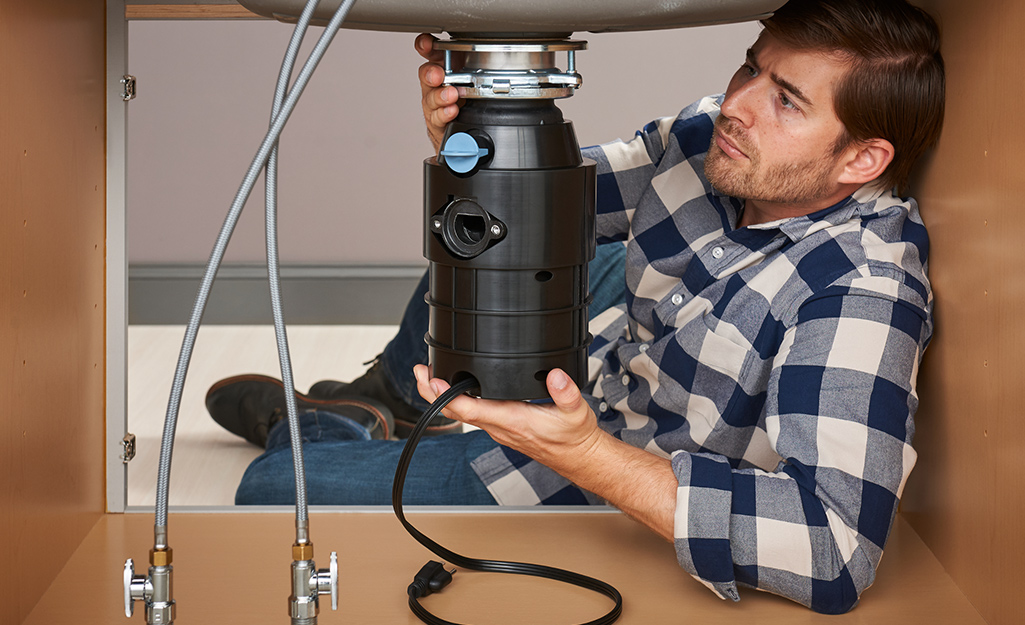Swift Solutions for Fixing a Dripping Waste Disposal Unit
Swift Solutions for Fixing a Dripping Waste Disposal Unit
Blog Article
The content down below relating to How to fix a pretty consistent leak from my garbage disposal is highly remarkable. Read it for yourself and see what you think of it.

Garbage disposals are vital kitchen area home appliances that assist in dealing with food waste effectively. Nevertheless, a leaking garbage disposal can be an aggravating and untidy issue to handle. Thankfully, numerous leaks can be fixed conveniently with a couple of simple steps. In this post, we will certainly go over how to repair a dripping garbage disposal effectively.
Intro
Garbage disposals are mounted under kitchen area sinks and are made to shred food waste into smaller sized pieces, permitting it to pass through the pipes system easily. While these tools are generally reputable, leaks can occur gradually as a result of deterioration, loosened connections, or damage to the unit.
Step-by-Step Overview to Fixing a Dripping Garbage Disposal
Shut off the Power
Prior to trying any kind of repairs, guarantee that the power to the garbage disposal system is turned off to prevent the danger of electrical shock.
Find the Leakage
Recognize the exact area of the leak and identify the cause
Tighten Connections
Utilize a wrench to tighten up any type of loosened connections in between the disposal system and the pipes system.
Replace Seals or Gaskets
If the leak is due to worn seals or gaskets, eliminate the old parts and replace them with new ones.
Patching Splits or Holes
For fractures or openings in the disposal device, use epoxy or an appropriate patching product to secure the broken area.
Identifying the Source of the Leakage
Prior to attempting to take care of a dripping garbage disposal, it is necessary to determine the source of the leak. This can commonly be done via aesthetic evaluation or by performing easy examinations.
Visual Assessment
Evaluate the garbage disposal unit very carefully for any kind of signs of water leakage. Pay close attention to areas around seals, gaskets, and connection points.
Testing for Leakages
One means to test for leaks is by running water with the disposal system and checking for any noticeable indicators of leak.
Typical Sources Of Leakages in Waste Disposals
Worn Seals and Gaskets
Seals and gaskets play a critical duty in stopping water from leaking out of the garbage disposal. With time, these elements can weaken, leading to leakages around the disposal device.
Loose Links
The connections in between the garbage disposal and the plumbing system can come to be loosened in time, causing water to leakage out during procedure.
Fractures or Openings in the Disposal Unit
Physical damage to the garbage disposal, such as cracks or openings in the real estate, can additionally cause leakages.
Tools and Materials Needed for Taking Care Of a Leaking Waste Disposal Unit
Prior to starting the fixing process, collect the needed tools and materials, consisting of a screwdriver, adjustable wrench, plumbing technician's putty, replacement seals or gaskets, and epoxy or patching product for repairing splits or holes.
Checking the Waste Disposal Unit After Repair Work
When the repair is total, examine the waste disposal unit by running water via it to ensure that the leak has been settled.
Preventive Upkeep Tips to Stay Clear Of Future Leaks
To prevent future leaks, it is essential to perform regular maintenance on your garbage disposal. This consists of maintaining it clean, preventing putting non-food items or hard things down the disposal, and occasionally looking for leaks or various other problems.
Verdict
In conclusion, fixing a leaking garbage disposal is a fairly simple procedure that can be completed with basic devices and products. By complying with the actions detailed in this write-up and practicing preventive upkeep, you can maintain your garbage disposal in good working condition and stay clear of costly repairs in the future.
HERE’S HOW TO FIX YOUR GARBAGE DISPOSAL
WHAT TO DO IF SOMETHING IS STUCK IN YOUR GARBAGE DISPOSAL
If the impeller won’t turn, there’s probably something stuck in the disposal. It could be a steak bone or peach pit, although plumbers report pulling all sorts of inappropriate objects out of disposals, such as bottle caps or aluminum foil. Make sure power to the disposal is off, and look inside to see if you can see the source of the jam.
Never stick your fingers in a disposal. Pull out anything you see with tongs or pliers.
If the disposal still won’t work, it may be time to call a plumber or consider buying a new disposal. GEM Plumbing & Heating is here for all of your garbage disposal needs.
WHAT TO DO IF YOUR GARBAGE DISPOSAL DRAIN IS CLOGGED
Take everything out from underneath your sink and put a bucket or other container under your disposal to catch any water that drains out. Disconnect your disposal from the power supply. If it’s plugged into a wall outlet, unplug it. If it’s hardwired into an electrical box, go to the electrical panel and turn off the breaker for the disposal. Pour ¼ cup of baking soda into the drain, followed by ½ cup of white vinegar. Give the solution a few minutes to fizz and do its work. Look into the disposal with a flashlight to see if you can see an object that might be causing the clog. If you see it, remove it using tongs or pliers. MORE TIPS ON DEALING WITH A CLOGGED GARBAGE DISPOSAL
Never use drain cleaner in a garbage disposal. It can damage the plastic parts inside the disposal. You can also be splashed with the caustic liquid while working to clear the clog. Beware! Never stick your fingers into a garbage disposal. Trust us — not a good idea. In many instances, your dishwasher drains through your garbage disposal. This allows the disposal to grind any large food particles that may be drained out of your dishwasher. There are some jurisdictions, however, where the plumbing code prohibits such a connection. WHAT TO DO WHEN YOUR DISHWASHER DRAINS THROUGH THE DISPOSAL
Run some water in the sink so your plunger has at least a ½-inch of water to create a seal and plunge vigorously up and down several times. You may need to repeat this several times. Run hot water down the drain to clear any residue that remains.

Do you enjoy more info about Why Is ? Put a remark below. We would be delighted to see your responses about this article. Hoping that you visit us again later on. In case you enjoyed reading our blog entry plz be sure to share it. Thank you so much for going through it.
Schedule An Appointment Report this page